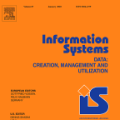As information becomes increasingly sizable for organizations to maintain the challenge of organizing data still remains. More importantly, the on-going process of analysing incoming data occurs on a continual basis and organizations should employ existing procedures that may not be adequate or efficient when attempting to access specific information to analyse. In these latter days of technological advancement, organizations can offer their customers extensive data resources to utilize and thus accomplish individual objectives and maintain competitiveness; however, it remains a challenge in providing data in a format that serves each clients suited needs. For some, the complexity of a data model can be overwhelming to utilize. Furthermore, companies should secure an understanding of the purchasing power used by specific consumer groups to remain competitive and ease the operation of data analysis. This research paper is to examine the use of multi-dimensional models within a business environment and how it may provide customers and managers with generating queries that will provide accurate and relevant data for effective analysis. It also provides a new framework that can aid various types of organisations using sizable database systems to create their own multidimensional model from relational databases and present the data in multidimensional views. It also defines the requirements. Despite the availability of set tools, the complexity of utilizing the conceptions discourages customers as they may become apprehensive about exploring these options for analytical purposes. This could be done by conducting a query.
翻译:更重要的是,目前分析进取数据的进程应持续进行,各组织应采用在试图获取具体分析信息时可能不够充分或效率不高的现有程序;在技术进步的后期,各组织可以向其客户提供广泛的数据资源,以便利用并实现个别目标并保持竞争力;然而,在以适合每个客户需要的格式提供数据方面,这仍然是一个挑战;对有些客户而言,数据模型的复杂性可能非常难以使用;此外,公司应保证了解特定消费者群体为保持竞争力和方便数据分析运作而使用的购买力;本研究文件的目的是审查在商业环境中多维模式的使用情况,以及它如何向客户和管理人员提供查询,为有效分析提供准确和相关的数据;它还提供了一个新的框架,可以帮助各类组织利用可扩展的数据库系统创建自己的多层面模型,并从关系数据库中介绍数据;它还界定了各种要求;尽管已有成套工具,但利用这些分析方法的复杂程度可能阻碍客户进行这些分析。





